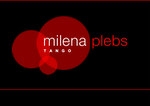
See english translation below
El baile del tango es atractivo a la vista de por si, muchas veces, sin siquiera importar la calidad. Mucha gente, viendo shows de tango, enloquece con un par de ganchos y una caricia provocativa. Pero lo que trasciende en el tiempo son las creaciones originales y que se distinguen de lo común. Si bien no hay reglas definidas para la creación coreográfica, creo fundamental trabajar en una estructura subyacente que funcione como soporte de cada pieza bailada, para incrementar la llegada al público. Hay que tomarse tiempo para profundizar e ir más allá de elegir una música y llenarla con pasos. Eduardo Arquimbau decía muy acertadamente, que coreografiar un tango es como escribir una carta: saludo y presentación del tema, desarrollo del mismo y conclusión. Es útil partir de una idea madre, en cuanto a lo que se quiere expresar: una historia, una sensación, una o diversas dinámicas de movimiento, la música y lo que ella inspira, un estado emocional, una imagen, un estilo, un personaje, una visión, un sueño, etcétera. En cada caso trabajar con el por qué de esa intención o elección. Construir a partir de esa idea madre investigando el estilo coreográfico, el diseño espacial, muy importante la elección del vestuario y, de ser necesario, elementos, utilería, iluminación, y todo lo que ayude a generar el clima propicio acorde a esa idea primordial. Idear un punto de partida o hilo conductor de donde agarrarse para crear. No importa si se entiende o no, el mensaje entra por distintos canales de percepción, no sólo a través de la mente lógica racional. Aunque se trate de mostrar pura danza, es conveniente partir desde algún concepto definido, que va a potenciar la misma desde un lugar definido. En síntesis, propongo la investigación de formas nuevas, incluso en el baile más tradicional: nuevas dinámicas, juegos coreográficos, distintos estados del “ser” bailable, contrapunto de personalidades, e imaginar cuál es el entorno: ¿Dónde esta ocurriendo ese baile y por quién está bailado? Y no hace falta explicitarlo, eso resultaría obvio. Este mecanismo funciona como guión y sostén expresivo interno en el momento de la representación. El público entra en el código expresivo cuando recibe un mensaje claro, aunque sea subliminal, y así, la creación coreográfica queda grabada en la retina y en el corazón, como recuerdo imborrable. •
Copyright © El Tangauta 2007
Choreography: A clear message.
The resolution of a choreography through the accumulation of figures without a definite idea does not turn out to be the best option.
Tango dancing is attractive to the eyes in itself, many times, even irrespective of its quality. Many people, seeing tango shows, go crazy at the sight of a pair of ganchos and a provocative caress. But what transcend in time are the original creations that are different from the average. Though there are no definite rules for choreographic creation, I believe it is fundamental to work on an underlying structure that functions as backing for each dance, to increase the connection with the audience. One must take time to go deeper and beyond choosing a musical piece and filling it with steps. Eduardo Arquimbau wisely said that to choreograph a tango is like writing a letter: there is a greeting and a presentation of the subject, a development of it and a conclusion. It is useful to start from a foundation idea, about what one wants to express: a story, a sensation, one or diverse movement dynamics, the music and what it inspires, an emotional state, an image, a style, a character, a vision, a dream, etc. and to work in each case with the reason for that intention or election. One should build from that original idea by researching the choreographic style, the space design, and also, very important, the choice of the wardrobe and, if necessary, elements, props, lighting, and everything that helps to generate a favorable atmosphere for that fundamental idea. The intention is to think of a starting point or conductive thread from where to create. It does not matter whether it is understood or not, the message enters through different channels of perception, not only through the rational logical mind. Even if it is a matter of showing pure dance, it is convenient to start from a definite concept that is going to promote the dance from a definite place. In synthesis, I propose the research of new forms, even in the most traditional dance: new dynamics, choreographic games, states of the dancing being, counterpoint of personalities, and to imagine the environment: where is this dance taking place and who is dancing it? It is not necessary to make it explicit, that would be stating the obvious. This mechanism works as script and internal expressive support at the moment of performing. The audience enters into the expressive code when it receives a clear message, albeit subliminal, and thus, the choreographic creation remains engraved in the retina and in the heart, as an indelible memory. •
Copyright © El Tangauta 2007
Publicado en El Tangauta - EDICION nro 157
Traducción: Dolores Longo.






No hay comentarios:
Publicar un comentario